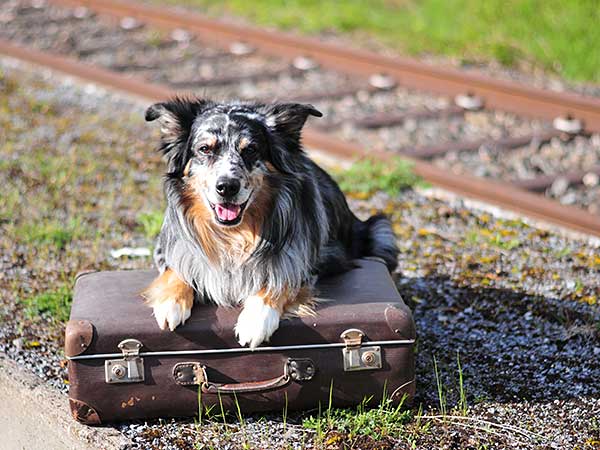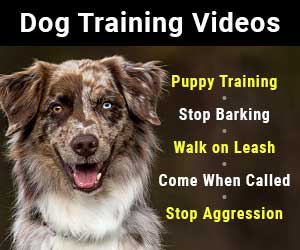
Dog Fostering? How to Get a Foster Dog Adopted

If you are 16 years old or under you can become a "Junior Writer" like Kate and have your article appear on the site! Just contact me and let me know about your idea. ~ Anton
Most of us have seen the ASPCA commercials of dogs with matted fur and eyes filled with sorrow. We either reach for the remote to quickly change the channel or grab our phone to make a donation, but these aren't the only options. If you are already a volunteer or are interested in dog fostering, you can adopt out a rescue Australian Shepherd by following this simple process.
1. Behavior comes first. Whether your Australian Shepherd rescue was feral or a loving family dog, behavior always comes first, and you must be prepared to train your foster dog. Before introducing your dog to the many people that want to adopt one, you must ask yourself some simple questions. Will this dog nip at a young child? Will he go inside of a crate on command? Although some issues are more pressing than others, applicants will be looking for a dog that goes to the bathroom outside, likes sleeping in a crate, and knows basic commands such as sit and stay.
When fostering a dog, if you are planning on adopting to a family or new Aussie owners, it is important to ensure that they are all aware of the breed's distinct personality and any problems that may come with it. Even though the adults of the family are the ones ultimately deciding if their family wants to adopt your foster, try teaching him to perform fun tricks such as spin, speak, and jump because they will interest the kids.
2. Say cheese! When you are ready to begin looking for adopters, it is crucial to take high-quality pictures of your foster dog. These will be posted on the shelter or rescue's website and shown to adopters, so they must not only be clear, but they should showcase your foster's personality.
Whether he is a couch potato or loves tearing circles around the backyard, your picture should capture what he enjoys doing the most. As you prepare to take pictures, determine if the lighting is an accurate reflection of your dog, and if you want to include a theme or accessories. Although it's not necessary, it catches the eye of adopters browsing the rescue's website.

kynologieschweiz / stock.adobe.com
Dog fostering bridges the gap between an Australian Shepherd rescue and their forever home.
Dog Fostering Means Getting To Know The Dog And Helping Them Put Their Best Paw Forward
3. Who am I? Since your foster is unable to tell you what his personality is, you will need to figure this out over the course of a few short days. When you put a picture of your foster on the rescue's website, you will need to include a short description, or biography, of the dog which includes the dog's name, gender, breed, age, and any other unique facts.
You will also want to include whether the dog is house-trained, crate-trained, and if he gets along with other dogs, cats, and children. The biography is a great place to embrace your creative side, but you should keep in mind that adopters will not want to read about your foster's entire life while scrolling through the website. Keep your story about your Australian Shepherd rescue concise.
4. Jump! Most shelters and rescues do not have the time or resources to have a website that is up-to-date with the newest technology, so it is important to take advantage of what is available to you when dog fostering. Along with pictures and a short biography and photograph, you may also want to include a video of your foster.
When you record a video, you will want to make sure that there is reduced background noise, and similarly to a picture, proper lighting. Adopters may also become confused when there is more than one dog in the video, in which case if you do decide to post a video of your foster and another dog playing, it is important that they do not look alike.
Whether the video is taken indoors or outdoors, it should have a purpose, such as showing off a new trick your dog has learned or a quick clip of him retrieving a tennis ball. Aussies are incredibly entertaining, and it is fantastic if you are able to capture their energy on camera.
5. Handle with caution. While many rescues have adoption events where potential adopters can meet rescue dogs more than once a week, they can be overwhelming for even the calmest dog. If your foster is not friendly with other dogs or children, consider spending more time training him before introducing him to the stress of an adoption event. It's all part of dog fostering.
Other volunteers are also willing to help if you are uncomfortable going to an event, so make sure to treat everyone in your rescue with additional kindness and respect. Since most adoption events are on the weekend and can interrupt any social plans you may have, try taking your foster with you to festivals, fairs, and farmers markets. As long as your dog is always comfortable and hydrated, these are great places to meet new people who may be interested in your foster.
Some foster dogs may not be as cute or as friendly as others, but with time, patience, and help from other volunteers, your Australian Shepherd rescue will be adopted to a family that will give him the life he deserves. If you are able to follow these steps, dog fostering can be a fun and educational experience that not only brings success for everyone involved, but a smile to your face.
Have Dog Training Questions?
Check out these introductory dog training videos...
I want my dog to stop being aggressive.
I want some help training my new puppy.
I want my dog to stop barking at everything.
Get Australian Shepherd Info, Website Updates, Special Offers, and Cartoons...
FREE GIFT
You'll also receive a free copy of the ebook
My Everyday Dog Training Tools
by professional dog trainer Daniel Abdelnoor, "Doggy Dan"











 Loading Image...
Loading Image...